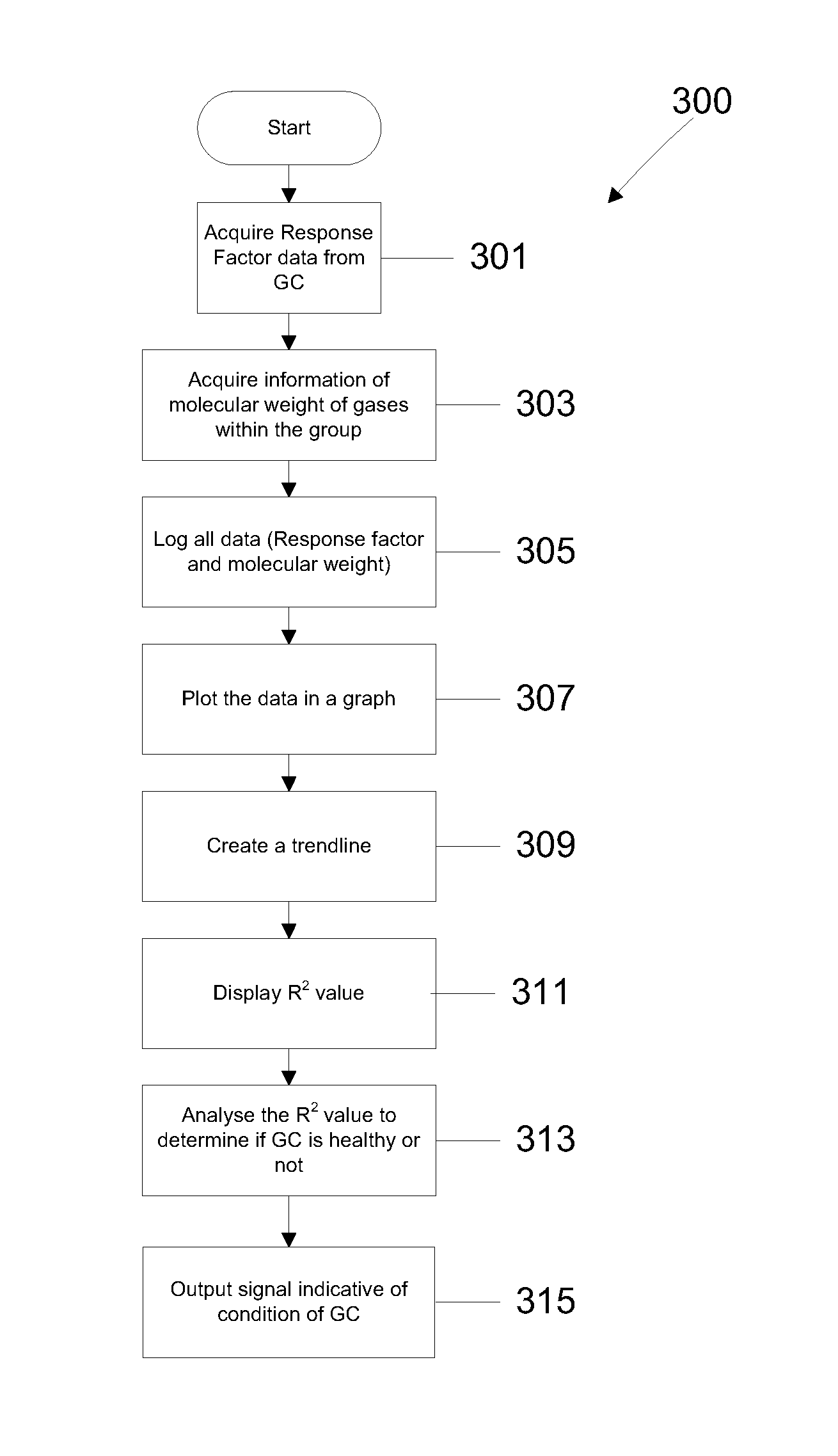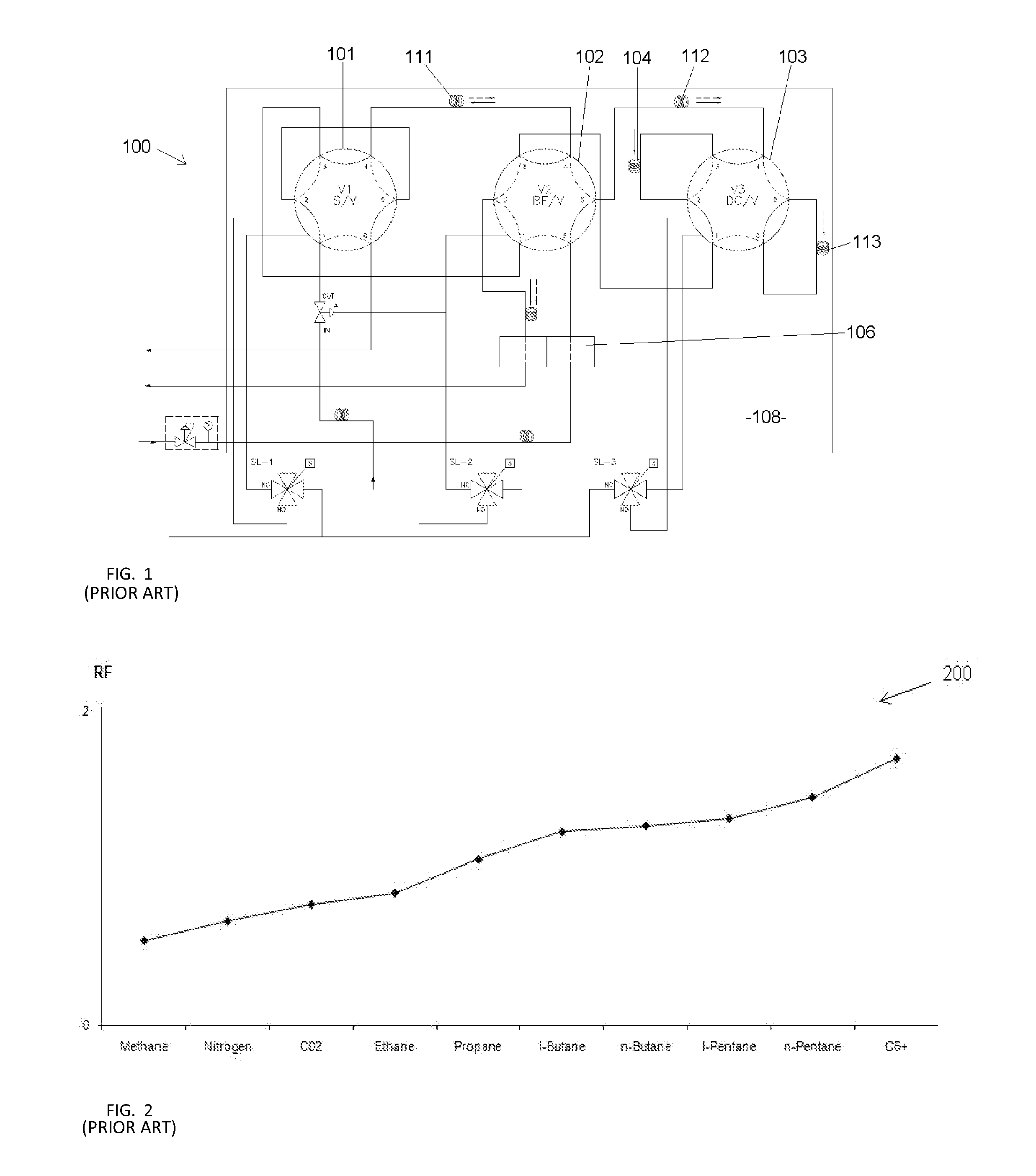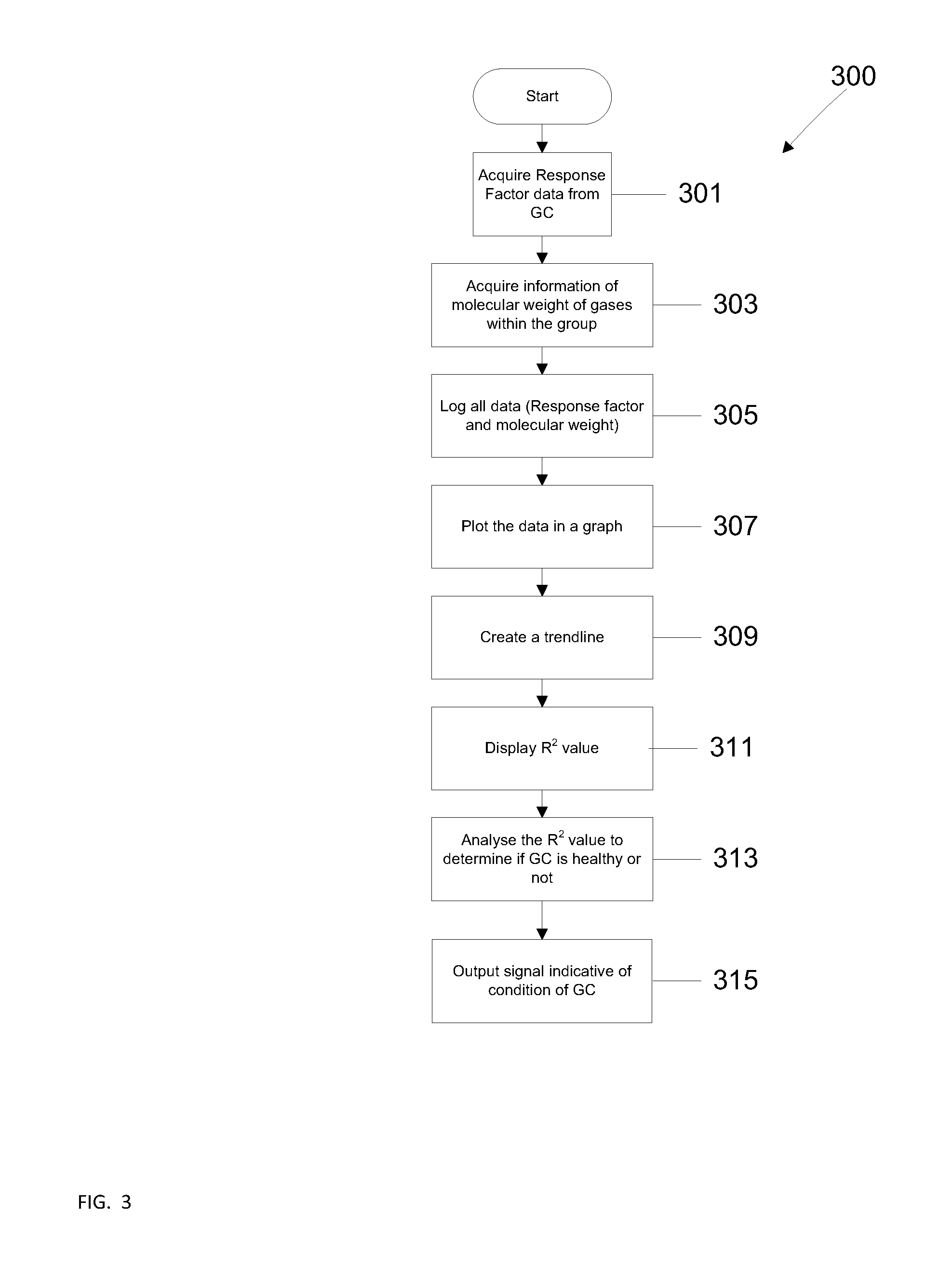Method for gas chromatgraphy analysis and maintenance
a gas chromatography and analysis method technology, applied in the field of gas chromatography, can solve the problem that previous calibration attempts did not adequately address the need to diagnose operational faults, and achieve the effect of reducing one or more drawbacks
- Summary
- Abstract
- Description
- Claims
- Application Information
AI Technical Summary
Benefits of technology
Problems solved by technology
Method used
Image
Examples
example 1
[0069]A first example is described with reference to FIGS. 10A and 10B, which are graphs 1000, 1001 of the Log(RF) data versus Log(MW) data for respective compound groups in a C7+ system. A comparison of the RF data for the C7 compound reveals the following: Log(RFC7)1C7 (i.e. the measured data is below the trend line); Log(RFC7)C7(footprint)) (i.e. the measured data is less than the corresponding footprint data); Log(RF) data for other compounds are similar to their respective footprint data (i.e. within a predetermined tolerance, such as 1%); and R2 for the C1-C2-C7 chart is less than a set threshold (normally set to 0.99).
[0070]This result can be explained by some of the heavy compounds leaving the first column 111, and flowing through column 112. This reduces the measured response factor of the heaviest component (C7+). The fault is due to a valve timing error on valve 102; it is actuating too late, and the fault can be addressed by decreasing the valve actuation time.
[0071]It w...
example 2
[0072]A second example is described with reference to FIGS. 11A and 118, which are graphs 1100, 1101 of the Log(RF) data versus Log(MW) data for respective compound groups in a C7+ system. A comparison of the RF data for the C6 and C7 compounds reveals the following:
Log(RFC6)1C6 (i.e. the measured data is below the trend line) Log(RFC6)C6(footpring)) (i.e. the measured data is less than the corresponding footprint data);
Log(RFC7)>y1C7 (i.e. the measured data is above the trend line); Log(RFC7)>Log(RFC7(footprint)) (i.e. the measured data is greater than the corresponding footprint data); Log(RF) data for other compounds are similar to their respective footprint data (i.e. within a predetermined tolerance, such as 1%); and R2 for the C1-C2-C7 chart and the C3-nC4-nC5-nC6 is less than a set threshold (normally set to 0.99).
[0073]This result may be explained by some of the middle components being back-flushed together with the heavy component. This increases the measured response facto...
example 3
[0074]A third example is described with reference to FIGS. 12A and 12B, which are graphs 1200, 1201 of the Log(RF) data versus Log(MW) data for respective compound groups in a C7+ system. A comparison of the RF data for the C2 compound reveals the following: Log(RFC2)1C2 (i.e. the measured data is below the trend line); Log(RFC2)C2(footpring)) (i.e. the measured data is less than the corresponding footprint data); Log(RF) data for other compounds are similar to their respective footprint data (i.e. within a predetermined tolerance, such as 1%); R2 for the C1-C2-C7 chart is less than a set threshold (normally set to 0.99); and R2 for the C3-C4-C5-C6 chart is greater than a set threshold (normally set to 0.99).
[0075]This result can be explained by some ethane being left in the second column 112, after the actuation of valve 113 to trap the light compounds. This reduces the measured response factor of the ethane (C2). The fault is due to a valve timing error on valve 103; it is actuati...
PUM
 Login to View More
Login to View More Abstract
Description
Claims
Application Information
 Login to View More
Login to View More - R&D
- Intellectual Property
- Life Sciences
- Materials
- Tech Scout
- Unparalleled Data Quality
- Higher Quality Content
- 60% Fewer Hallucinations
Browse by: Latest US Patents, China's latest patents, Technical Efficacy Thesaurus, Application Domain, Technology Topic, Popular Technical Reports.
© 2025 PatSnap. All rights reserved.Legal|Privacy policy|Modern Slavery Act Transparency Statement|Sitemap|About US| Contact US: help@patsnap.com



